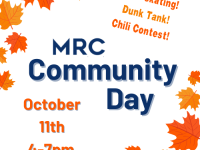Caching for the Winter
 Black-capped chickadees are among just a few birds that cache food for later use. Courtesy of Jeff Wells
Black-capped chickadees are among just a few birds that cache food for later use. Courtesy of Jeff Wells
 The authors recently noticed many of signs of fall, like this bumblebee on a goldenrod at the edge of their porch, before spying a black-capped chickadee caching around their yard seeds it had garnered from a neighbor's feeder. Courtesy of Jeff Wells
The authors recently noticed many of signs of fall, like this bumblebee on a goldenrod at the edge of their porch, before spying a black-capped chickadee caching around their yard seeds it had garnered from a neighbor's feeder. Courtesy of Jeff Wells
 Black-capped chickadees are among just a few birds that cache food for later use. Courtesy of Jeff Wells
Black-capped chickadees are among just a few birds that cache food for later use. Courtesy of Jeff Wells
 The authors recently noticed many of signs of fall, like this bumblebee on a goldenrod at the edge of their porch, before spying a black-capped chickadee caching around their yard seeds it had garnered from a neighbor's feeder. Courtesy of Jeff Wells
The authors recently noticed many of signs of fall, like this bumblebee on a goldenrod at the edge of their porch, before spying a black-capped chickadee caching around their yard seeds it had garnered from a neighbor's feeder. Courtesy of Jeff Wells
The late afternoon sun lit up the tops of the trees along the street. Most were still green, but the maple at the corner was already showing bright yellows and reds. A tall, brilliant yellow-orange goldenrod at the corner of the porch buzzed with the last furry bumblebees of the fall.
A few massive black turkey vultures careened past, their silvery underwings glinting in the light as they headed for their favorite roost in the trees down along the stream. We could hear a cardinal giving its hard chip call from the tangle of forsythia bushes in the backyard. A crow called and appeared briefly overhead against the blue sky.
That’s when we noticed a chickadee quietly hopping around the lilac then over to the crabapple. Through the binoculars we could see it looking and probing in the nooks and crannies. At first we thought the bird was searching for insects. Then we noticed it had a small sunflower seed in its bill. When the bird found the right spot, it tucked the seed in and flew back to the nearby feeder in the neighbor’s yard, just over our fence. A few minutes later it appeared again, calling “chick-a-dee” from the weather vane on top of the garage. This time it tucked the seed it had brought into a space in the metal of the weather vane. (We hope it will continue to tell us the correct wind direction even if it’s been loaded up with sunflower seeds!)
The number of bird species that store or cache food for later use, as this chickadee was doing, is quite limited. The behavior is only useful in species in which the individuals are planning on staying long enough to be able to make use of the stored food later in the year when other supplies may be at a low. That rules out the usefulness of the practice for most birds that make regular annual migrations. In fact, their tactic for dealing with food scarcity is to avoid the period all together by migrating to somewhere where there will likely be food available during the season when it’s not available at the other place.
Another pre-requisite for birds evolving caching behavior would have to be that they eat a type of food that won’t spoil. That could be because the environment is relatively dry or cold. Canada jays store scraps of fat and meat during the cold winters. Red-bellied woodpeckers store acorns in holes they make in trees, which presumably makes a handy storage facility that is dry enough to prevent the acorns from rotting.
What’s amazing is that these birds actually remember the thousands of places where they have hidden away their food stashes. Studies have shown that in at least one species, the part of the brain that deals with remembering these details is larger in size as one goes farther north. This is thought to be because the birds farther north have more likelihood of starving during the cold and lean times of late winter so they need to store more food and remember all the places they did so, if they are to survive.
There are so many questions that spring to mind. Do birds that cache have a goal of a certain number of caches per day or do they only cache when there is a daily surplus? Are there some individuals that don’t do much caching but sneak around and steal the caches of others? Is caching behavior something that is learned or do birds just do it inherently? Is caching behavior triggered each fall by temperature, seasonal changes, or something else?
The simple chickadee is not so simple. Isn’t nature amazing?
Jeffrey V. Wells, Ph.D., is a Fellow of the Cornell Lab of Ornithology and Vice President of Boreal Conservation for National Audubon. Dr. Wells is one of the nation's leading bird experts and conservation biologists. He is a coauthor of the seminal “Birds of Maine” book and author of the “Birder’s Conservation Handbook.” His grandfather, the late John Chase, was a columnist for the Boothbay Register for many years. Allison Childs Wells, formerly of the Cornell Lab of Ornithology, is a senior director at the Natural Resources Council of Maine, a nonprofit membership organization working statewide to protect the nature of Maine. Both are widely published natural history writers and are the authors of the popular books, “Maine’s Favorite Birds” (Down East Books) and “Birds of Aruba, Bonaire, and Curaçao: A Site and Field Guide,” (Cornell University Press).


























